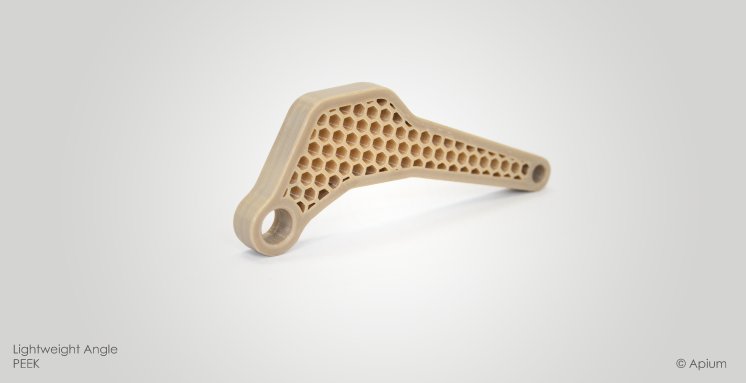High performance thermoplastics are of particular interest for applications in industrial manufacturing. This interest stems from the unique properties which this class of polymers show under extreme operating environments. Their resistance against wear loading, stability at relatively high temperatures, inertness under chemical attack and high specific strength make them key alternatives to applications where metals have traditionally been used. Therefore in the high-end engineering sectors covering health/medical, aerospace, automotive and oil&gas, high performance polymeric materials have a role to play. An obvious performance argument is in the vehicle (space and terrestrial) development sector where weight and energy consumption are coupled, where with the ability to develop low/light weight systems generally is being considered as a key solution towards achieving energy (fuel) economy in engineering systems. A polymeric material like PEEK (poly ether ether keton) has demonstrated to be highly competitive with engineering metallic materials like titanium, steel and aluminium alloys as a result of its bio-inertness, chemical resistance, specific strength and wear resistance. For instance in thermo-mechanically loaded gear systems, PEEK gears work with significantly less lubricant, compared to metal gears. This advantage gives rise to longer intervals between gear maintenance and cost reduction, owing to a less frequent replacement of the gear parts.
In recent times there have been successful efforts to process these kinds of polymers using new manufacturing methods such as 3D printing/additive manufacturing. While premium grade materials cost remain rather high especially for metals and ceramic based composites for additive manufacturing, a general interest remains high for thermoplastics. In the fields of prototyping, testing of proof-of-principle and design&production the adoption of 3D printing have been seen to change (i) efficiency, (ii) cost reduction, (iii) timeliness and (iv) job-quality, in a profoundly positive manner. The fused filament fabrication (FFF) 3D printing technology has greatly played a historic role in this regard. Driving the concept of 3D printing towards main stream manufacturing has indeed been made possible by the legacy of the FFF technology and polymeric materials, ushering the tremendous research and development work done on laser based systems, Polyjet systems, metals and ceramics. The economic sense backing an additive manufacturing business is clearly for small series production and projects requiring mass customization. Materials savings benefits of the FFF technology, the surface precisions possible in the strereolithography as well as the Polyjet systems and the speeds possible in the laser and the CLIP systems generally bring attention to AM methods. Recent studies [1] indicate that in the services sector of AM, the highest priority for service providers is in offering customized products and limited series functional products to end-users. For comparison on cost, the light weight PEEK honeycomb structure shown in Figure 1 weighs about 16 g and took about 6 hours to fabricate using an FFF 3D print at a 100% infill. The material cost for this part (10 x 45 x 115 mm3) is at 12.90€ in contrast to 15.30€ when CNC milled from a PEEK block. Clearly with the inclusion of the processing cost, machine degradation (tool wear etc) cost, cooling agents and labour cost, the CNC option would be more expensive; at least for one piece of the part.
The message for our readers is simple:
- 3D printing is a profoundly manufacturing-enabling tool
- use this tool if you are considering small production runs or mass customization or considering having a highly agile mobile manufacturing platform
- it is now possible to process high temperature polymeric materials (like PEEK, Ultem, PVDF, POM-c) using FFF 3D printing; the most adopted technology in the field of additive manufacturing.
Reference
[1] https://www.forbes.com/...


